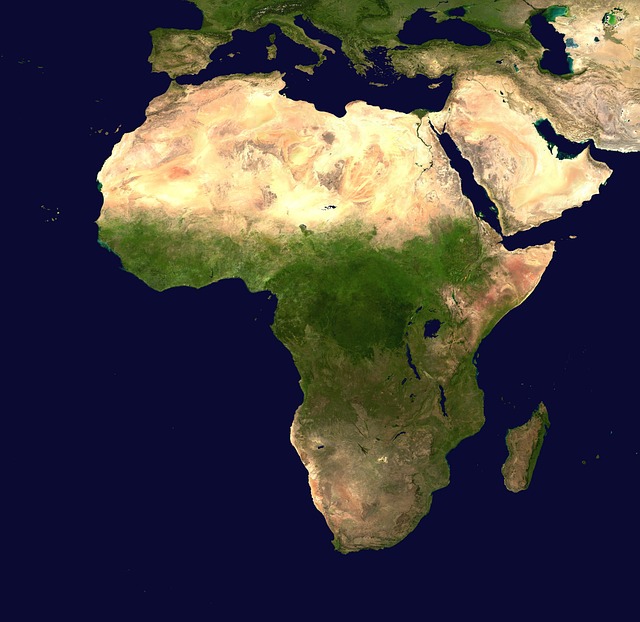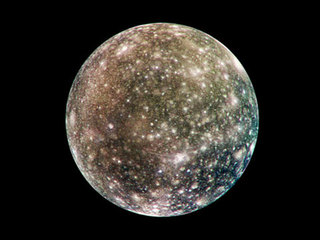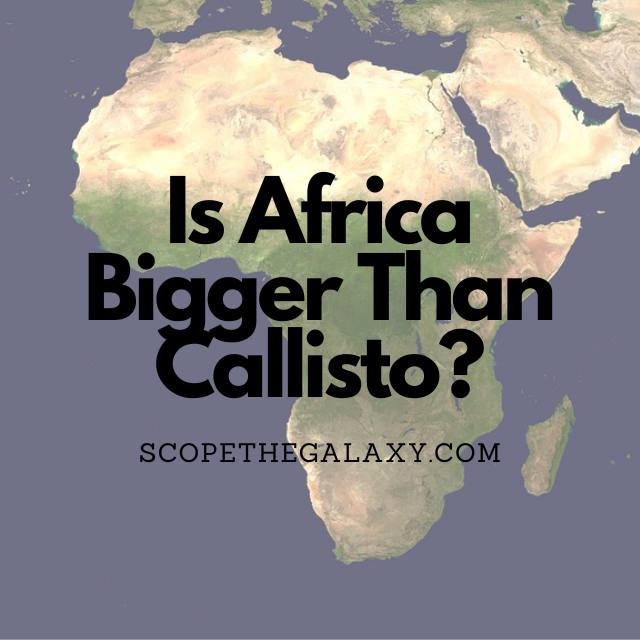*This post may contain affiliate links. This means we may make a commission if you purchase an item using one of our links*
Africa is the second biggest continent on Earth with a surface area of 30.3 million sq. kilometers and a volume of 1.21 billion cubic kilometers while Callisto is a spherical entity with a surface area of 73 million sq. kilometers and a volume of 59 billion cubic kilometers. As a result it only makes sense that Callisto would be the bigger of the two as it is a spherical object whereas Africa is a mostly flat land mass.
Continue reading to discover the features of each of these land masses along with the reasons why both are as big as they are.
How Big Is Africa?

Africa is the Earth’s second largest continent covering a total area of approximately 30.3 million square kilometers, equal to about 20% of Earth’s total land mass or 6% of the planet’s surface area. Africa possesses the world’s largest desert, plus it has the longest river of any continent, the Nile.
Africa is the second highest populated continent on Earth. The continent has 54 countries, including Egypt, Nigeria, and Kenya, and it accounts for roughly 17% of the world’s population, with more than 1.4 billion people.
There are eight main physical regions of Africa: the Sahara, the savanna, the rainforest, the Great Lakes, the Sahel, the Ethiopian Highlands, the Swahili Coast, and southern Africa. The Sahara Desert extends over the northern third of Africa and is one of the most inhospitable places on Earth. Its size is 9.2 million square kilometers – roughly the same size as the entire United States.
The African savannah is a vast grassland that covers most of the African continent (around 65%). It extends from the Red Sea at the east to the Atlantic Ocean in the west and from Senegal in the north to Sudan in the south.
A savannah is a type of landscape that consists of grasslands with few trees, bushes, or shrubs. The grasses are typically short but can grow up to almost four meters tall. The dominant vegetation is acacia and baobab trees, which provide shade and shelter for animals during daytime hours.
Africa possesses some of the world’s highest mountains; Mount Kilimanjaro is the tallest, which rises 19,341 feet from its base near the equator to its peak in Tanzania. Africa extends to a length of 8,000km between its northern and southern extremities in Tunisia and South Africa; its width of 7,400km stretches from Xaafuun Point in Somalia to Almadi Point in Senegal.
The thickness of Earth’s crust ranges from 5 to 70km and is generally thicker under continental land where it averages 40km. Taking this figure and multiplying it by Africa’s surface area, we can calculate the rough volume of the continent at 1.21 billion cubic kilometers.
This might sound like a sizable volume, but it’s no match Callistos volume as the third biggest moon in our solar system.
How Big Is Callisto?

Callisto is a moon of Jupiter and the third largest moon in the Solar System, which was discovered in January 1610 by Galileo Galilei.
The diameter of Callisto is 4,820.6km, while its surface area is 73,000,000 sq. km, a far greater expanse than that of the African continent. Still, like our seventh largest country, the terrain of Callisto varies, and it is the most heavily cratered object in our solar system.
Calisto’s volume is an impressive 59,000,000,000 cubic km, giving it a similar size to the planet Mercury (60.8 billion cubic km). Callisto is classified as a moon and not a planet because it orbits Jupiter rather than the Sun. Still, it is one of the largest moons in the solar system and covers an impressive expanse.
This mega moon is 99% as big as Mercury, but it only possesses a third of its weight because of the moon’s mixed composition.
Callisto’s average density is 1.83 cubic cm, which suggests that it is made of roughly equal parts of water ice and rocky material, plus additional volatile ices (like ammonia). Scientific research into the moon suggests that 49-55% of its total constitution is ice. The remaining rock is likely composed of silicates, chondrites, and iron oxide.
Still, the water ice only accounts for between 25 and 50% of the planet’s overall mass.
The surface of Callisto is heavily cratered and has a dark appearance. Scientists believe that the bright patches consist mainly of ice, while the darker patches show areas where the ice has eroded. The most distinctive crater is Valhalla, with its bright central region.
In the past, many scientists thought this huge “hunk of rock and ice” was “boring” because it had no shifting tectonic plates and no volcanic activity. At first appearances, it seemed to be a dead world.
Still, more recent research by NASA scientists concludes that Callisto could house a salty ocean interacting with rocks that are more than 250 km below the surface. Combine this with detections of oxygen in the exosphere, and today Callisto is included in the list of places where life could exist beyond Earth.
Callisto is 180 times farther from Earth than our moon, but its large amount of surface ice makes it shine brighter than our moon. Earth’s moon reflects only 0.12% of the Sun’s light, whereas Callisto reflects up to 20%.
Summary
Africa is the second largest continent on Earth but, other than diameter it doesn’t match any of Callisto’s other major metrics.
Callisto has a surface area more than double that of Africa’s and just under 50 times its volume, which only makes sense as Callisto is a spherical land mass while Africa is much flatter in comparison.

